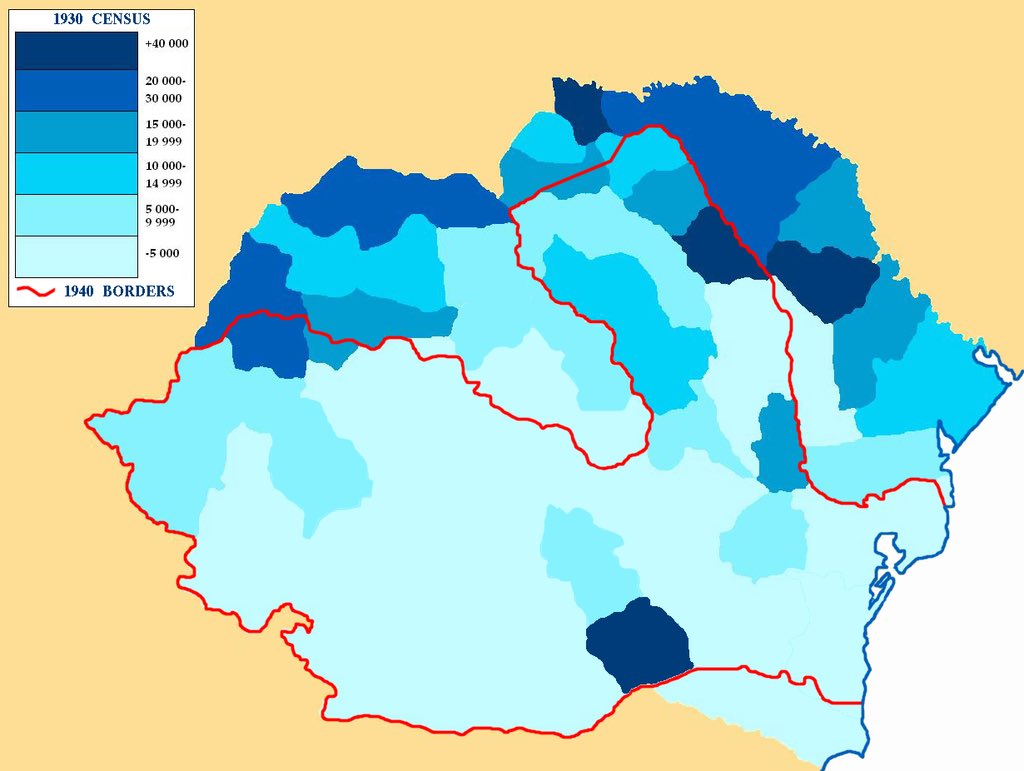Flying Dacian@FlyingDacian Tweeted the following:
This is a map of the distribution of Jews in Romania in 1930. 728,115 or 4% of the country was Jewish. Notice that the territories lost in 1940 to Russia and Hungary account for the majority of Jewish people in Romania in 1930.

And I asked him…so…what conclusions are we supposed to draw from his map?
And immediately I realized what the most important conclusion was for me and should, therefore, be for everyone: Jewish migration into eastern Europe and the nature of the Polish state at the time.
Don’t tell me you haven’t heard it; you can’t be from New York and not have heard it. You ask a now third or fourth generation Ashkenazi Jew where his ancestors were from and he says: “Oh, Russia or Poland…the borders kept changing.”
It’s a misconception that the Jews who fled pogroms, massacres, persecution and the social chaos of the 14th and 15th centuries in Europe of which they were the primary victims, migrated east to different countries in eastern Europe. They didn’t. They only moved to Poland.
People wonder what it was that led so many Jews to migrate to poor and socially backwards areas of Europe like Russia or Ukraine. Again, they didn’t. What Jew in his right mind would have fled persecution in the Rhineland, say, and sought refuge in Russia, for God’s sake? A relatively primitive mediaeval theocracy, which it arguably still is. Jews, however, ended up in Russia and Ukraine, when Poland was partitioned twice in the late eighteenth century by Russia, Austria and Prussia/Germany. The Pale of Settlement, which my hypothetical New York Ashkenazi Jew above might have heard of — the parts of the Russian Empire were it was legal for Jews to live — were simply the parts of what is now Poland, Ukraine, Belarus’ and Lithuania that Russia got out of the partition of Poland. Upon taking control of these lands, Tsarist Russia also inherited the largest part of Polish Jewry as well.
Why did they go to Poland then? Because at the time that persecution of Jews in western Europe was booming the Rzeczpospolita, the Polish-Lithuanian Commonwealth (shown in its various constituent parts in map below) was by far the most tolerant and progressive Christian state in Europe, which surprises many people, and like the Ottomans, Poles saw that Jews’ talents would benefit their state, and allowed and even organized their settlement throughout Poland.

So to address @FlyingDacian‘s curiosity, the parts of contemporary Romania that had the largest number of Jews in 1930, were simply those regions that had been Polish, then passed, some to Hungary, but most to Russia, and then ended up in modern Romania.
************************************************************************
Write us: with comments or observations, or to be put on our mailing list or to be taken off our mailing list, contact us at nikobakos@gmail.com.

One Response to “Jews, the Polish-Lithuanian Commonwealth, Romania and how “the borders kept changing”.”